From your baby’s development to why you need to pay attention if your gums are bleeding, here’s the lowdown on being 13 weeks pregnant.
-
Tracking cycle
-
Getting pregnant
-
Pregnancy
-
Help Center
-
Flo for Partners
-
Anonymous Mode
-
Flo app reviews
-
Flo Premium New
-
Secret Chats New
-
Symptom Checker New
-
Your cycle
-
Health 360°
-
Getting pregnant
-
Pregnancy
-
Being a mom
-
LGBTQ+
-
Quizzes
-
Ovulation calculator
-
hCG calculator
-
Pregnancy test calculator
-
Menstrual cycle calculator
-
Period calculator
-
Implantation calculator
-
Pregnancy weeks to months calculator
-
Pregnancy due date calculator
-
IVF and FET due date calculator
-
Due date calculator by ultrasound
-
Medical Affairs
-
Science & Research
-
Pass It On Project New
-
Privacy Portal
-
Press Center
-
Flo Accuracy
-
Careers
-
Contact Us
13 weeks pregnant: Your guide to this week of your first trimester
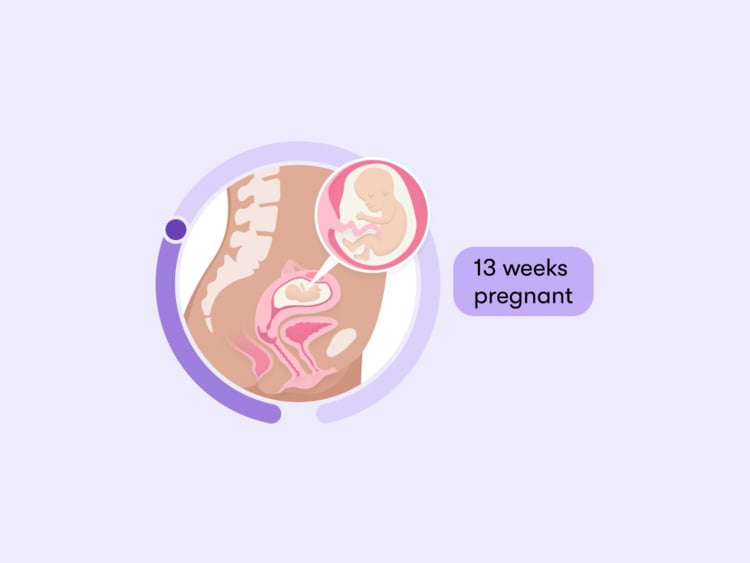

Every piece of content at Flo Health adheres to the highest editorial standards for language, style, and medical accuracy. To learn what we do to deliver the best health and lifestyle insights to you, check out our content review principles.
Genitals! Urine! Lemons! It’s all happening now that you’ve hit 13 weeks. This is the final week of your first trimester, so you’ll soon be heading into your second trimester. And if you’re wondering how many months are 13 weeks pregnant, you’re into your fourth month of pregnancy now.
As you mark this milestone, let’s dive into what to expect and look out for this week with the help of a Flo expert.
Your baby at 13 weeks pregnant
Their genitals are developing
Your baby’s testes or ovaries are now fully developed inside, and a penis or clitoris is still growing. That means by the time you have your 20-week ultrasound, your doctor should be able to see the sex of your baby on the screen — although you might find it difficult to figure out what you’re looking at!
Their kidneys have developed
By now, your baby’s kidneys have also developed. What’s more, your baby is even beginning to produce urine. And their pee plays a vital role in your pregnancy because, by 20 weeks, it makes up most of your amniotic fluid — the liquid that your baby floats around in to protect and cushion them in your uterus.
How big is a baby at 13 weeks?
Length (crown to rump): Around 6.7 cm or 2.6 in.
Weight: Around 73 g or 2.6 oz.
Size: Equivalent to a lemon
All measurements are approximate and vary within the normal range.
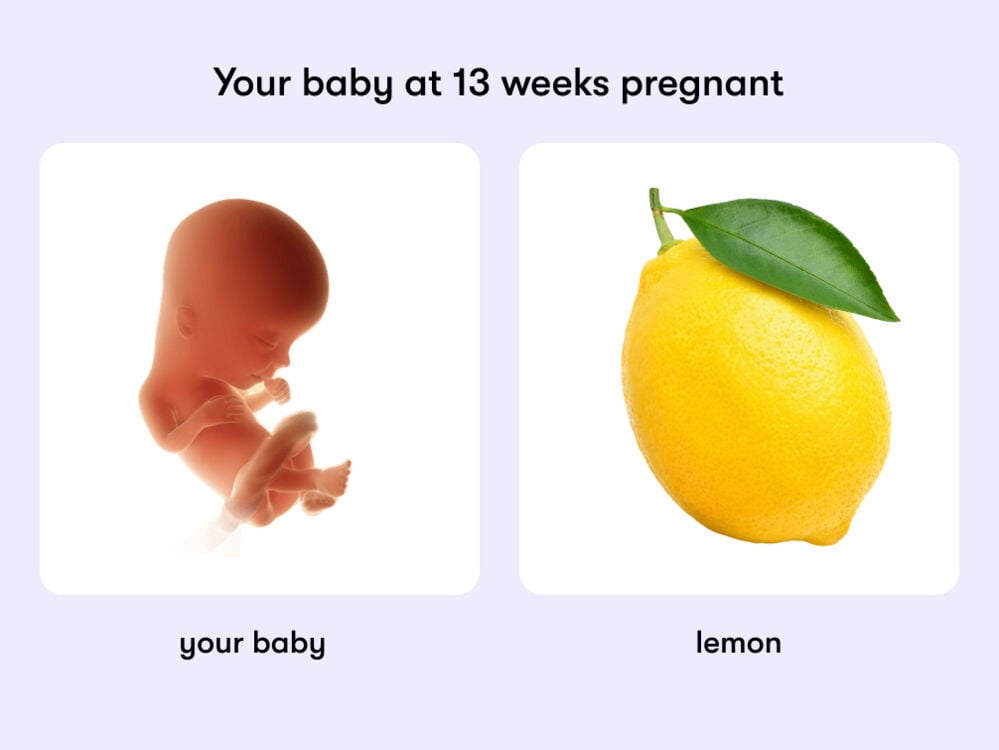
Your body at 13 weeks pregnant
No more nausea?
You may be saying goodbye to pesky first-trimester symptoms like nausea and vomiting right about now. Hurrah! The reason? Research suggests these symptoms might be caused by the effects of the pregnancy hormone, human chorionic gonadotropin, which is produced by your placenta shortly after you conceive. “By this stage of pregnancy, your levels of this hormone have peaked, and they sometimes drop a little bit, too, which can make you feel better,” explains Dr. Jenna Flanagan, obstetrician and gynecologist at Beth Israel Deaconess Medical Center, Massachusetts, US.
You may be noticing gum changes
If you’re finding that your gums are sore, swollen, and/or bleeding, it may be thanks to pregnancy gingivitis (gum disease). Again, this is likely due to hormonal changes during pregnancy. These can make you more likely to get plaque (that sticky layer containing bacteria that forms on your pearly whites) — and that leads to inflammation and bleeding. In fact, around 60% to 75% of pregnant women develop gingivitis, so now is a good time to book a trip to your dentist for a checkup.
Your questions answered
Can you feel your baby move at 13 weeks?
While your baby is certainly active down there in your uterus, it’s too early for you to feel any of their movements. But you won’t have to wait much longer before that first magical moment, as you should first feel movement between around 16 and 24 weeks pregnant. Did you know that the first time you feel your baby move has a name? Yep, it’s called quickening.
Should you have a bump at 13 weeks pregnant?
You might; you might not — there are no hard and fast rules about this, as every pregnancy is different. “Whether you have a bump yet can depend on different things such as whether you’ve been pregnant before or if you’re expecting more than one baby — in those cases, you might show earlier,” explains Dr. Flanagan.
What might a 13-weeks pregnant belly look like?
So what might you expect if you have started to show? “You may have a small baby bump by now as your uterus has grown up and out of your pelvis — so now might be the time to buy some stretchy maternity clothes, like pants,” adds Dr. Flanagan.
Is 13 weeks the first or second trimester?
The American Congress of Obstetricians and Gynecologists defines the first trimester as up until 13 weeks and six days. “Thirteen weeks is a transition point in your pregnancy when, hopefully, you’re over the worst of your symptoms, and you may have more energy,” says Dr. Flanagan.
Take a quiz
Find out what you can do with our Health Assistant
Your 13 weeks pregnant checklist
Ensure you’re eating well
So, what should be on your pregnancy food list at 13 weeks pregnant? Dr. Flanagan has this advice: “Eat what your body needs. If you’re hungry, eat. If you’re not hungry, you don’t have to force yourself to eat additional calories. Eating small, frequent meals throughout the day is a good idea to keep your energy levels up.” So essentially: listen to your body. You’ve got this!
Think about changing your sleeping position
It might sound weird, but you could also add changing your sleeping position to your pregnancy checklist. This is all about what’s comfortable for you, says Dr. Flanagan. “At this stage, if you feel comfortable sleeping on your back or on your stomach, that’s fine. It’s not dangerous for you or your baby,” she says. “Starting from about 20 weeks, I usually tell people to avoid sleeping flat on their back. That’s because by then, your uterus is heavy enough to press on your abdomen’s major arteries and blood vessels. The result is you can feel light-headed and nauseous because of the decrease in blood flow.” Of course, it can be difficult to control your body’s position when you’re asleep. So if you wake up on your back, don’t panic — simply roll over and go back to dreamland.
When to see your doctor at 13 weeks pregnant
At 13 weeks pregnant, you can check in with your doctor about what to expect during your second trimester. Exciting! And remember that you don’t need to wait until your appointments if you have any concerns or questions about your pregnancy. However, at 13 weeks pregnant you should contact your doctor immediately if you experience:
- Severe cramping
- Vaginal bleeding
- Changes in vaginal discharge
- Fever
- Dizziness and fainting
- Severe vomiting
This isn’t an exhaustive list and just an example of some of the changes you should look out for. Some of these can be a sign of miscarriage or other health complications, so it’s essential that you speak to your doctor about the best next step for you. And if you’re ever worried about any other symptoms you experience during pregnancy, then don’t hesitate to reach out to your healthcare provider.
13 weeks pregnant: The takeaway
At 13 weeks pregnant, you’re on the final stretch of your first trimester. Nausea and vomiting should (finally!) start to ease by now, and you might even begin to show a baby bump. And what about your little one? Well, at 13 weeks, your baby’s genitals are developing, and they’re even starting to pee. While you’re unlikely to be able to feel their movements at this stage, you won’t have long to wait. So relax and enjoy these few days before you enter your second trimester.
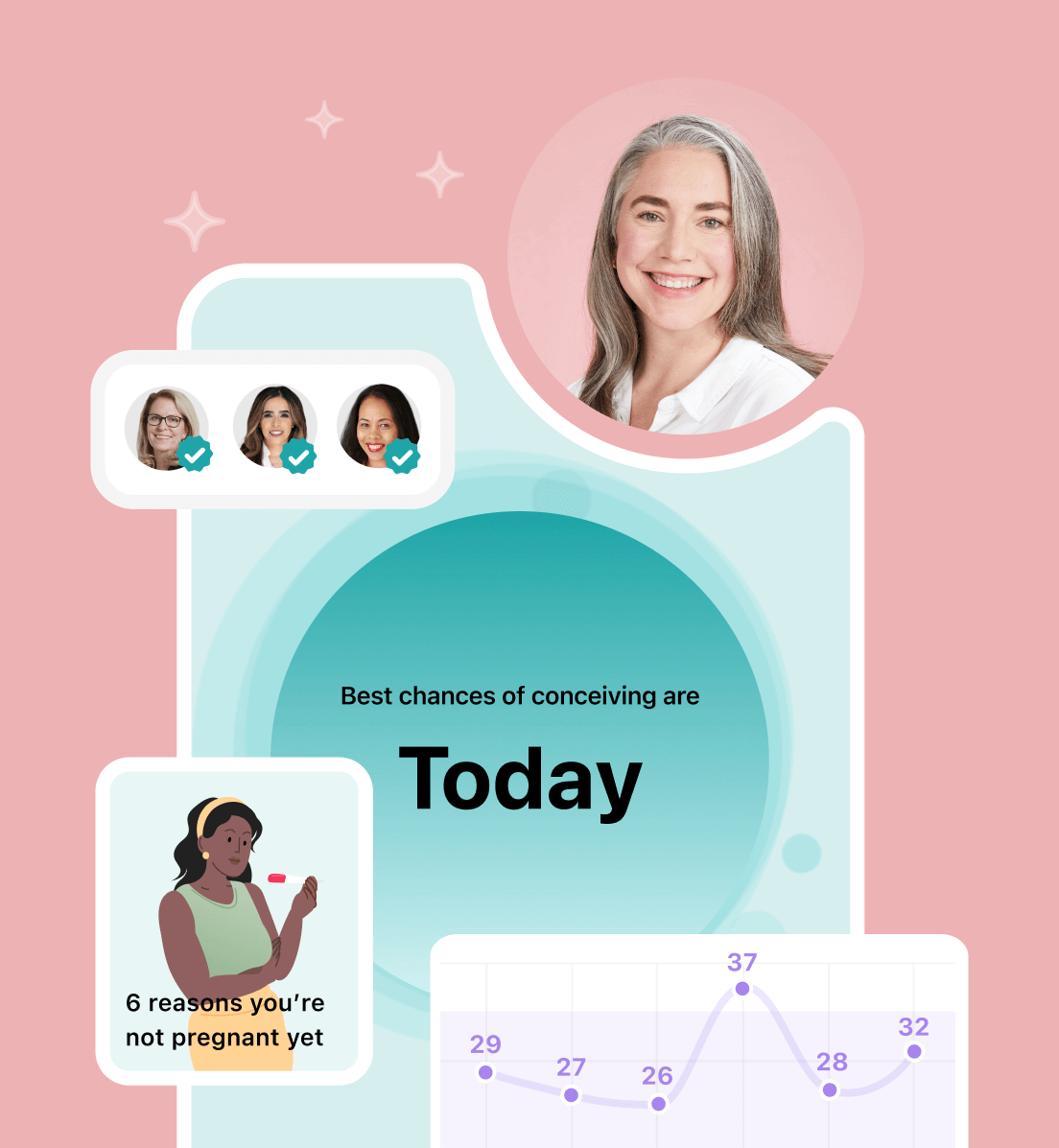
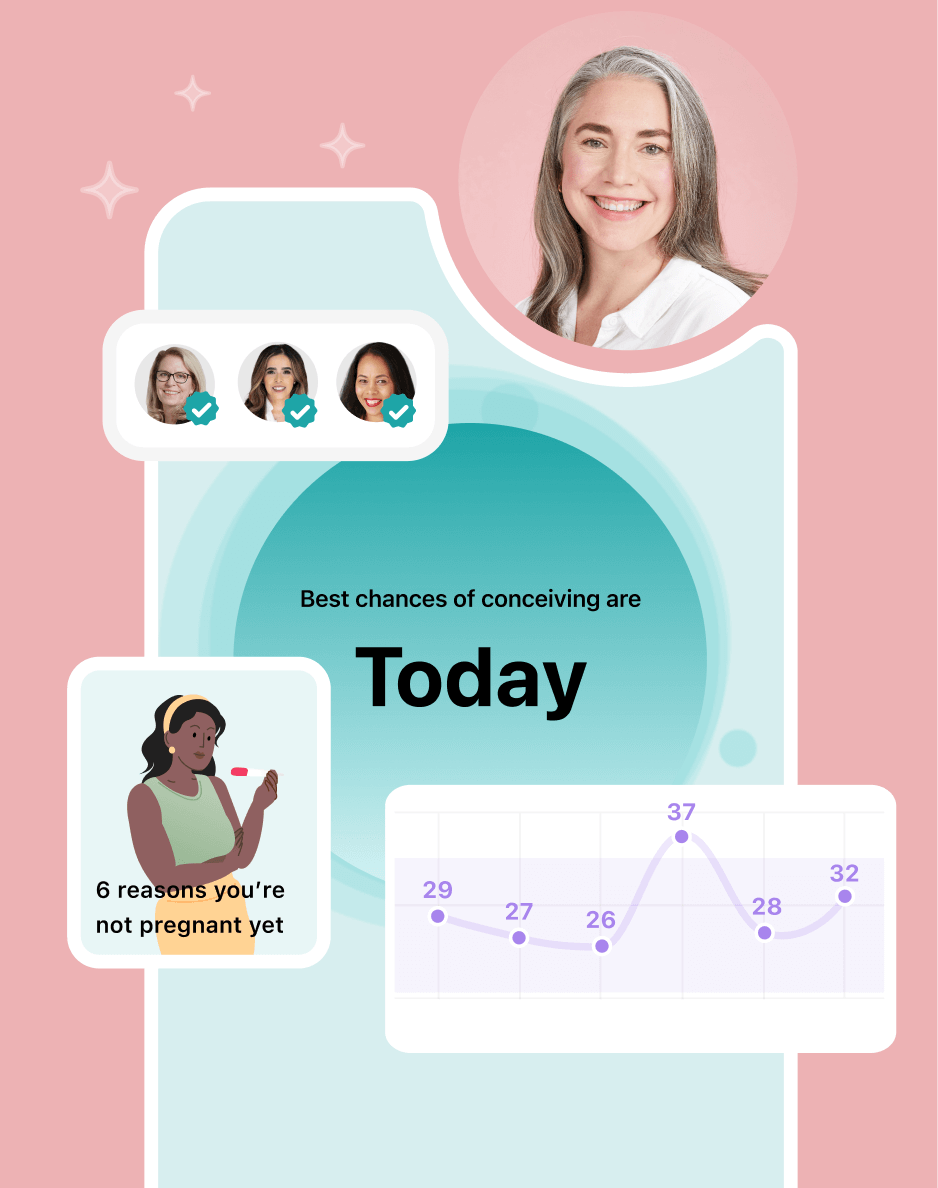
Hey, I'm Anique
I started using Flo app to track my period and ovulation because we wanted to have a baby.
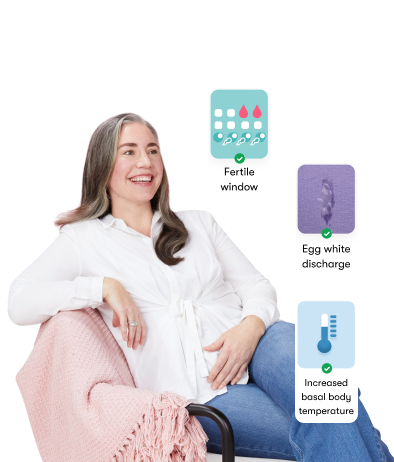

The Flo app helped me learn about my body and spot ovulation signs during our conception journey.
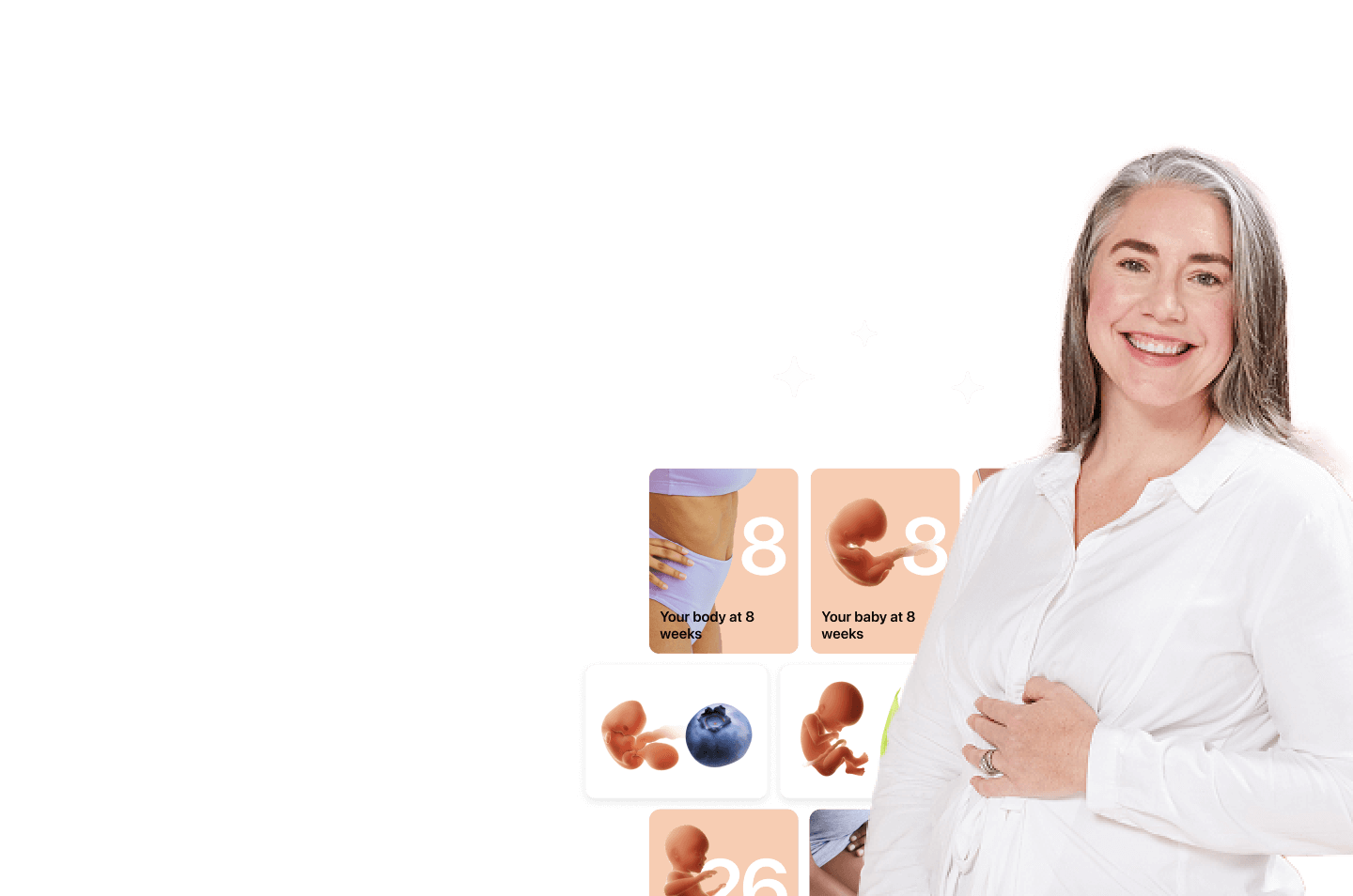
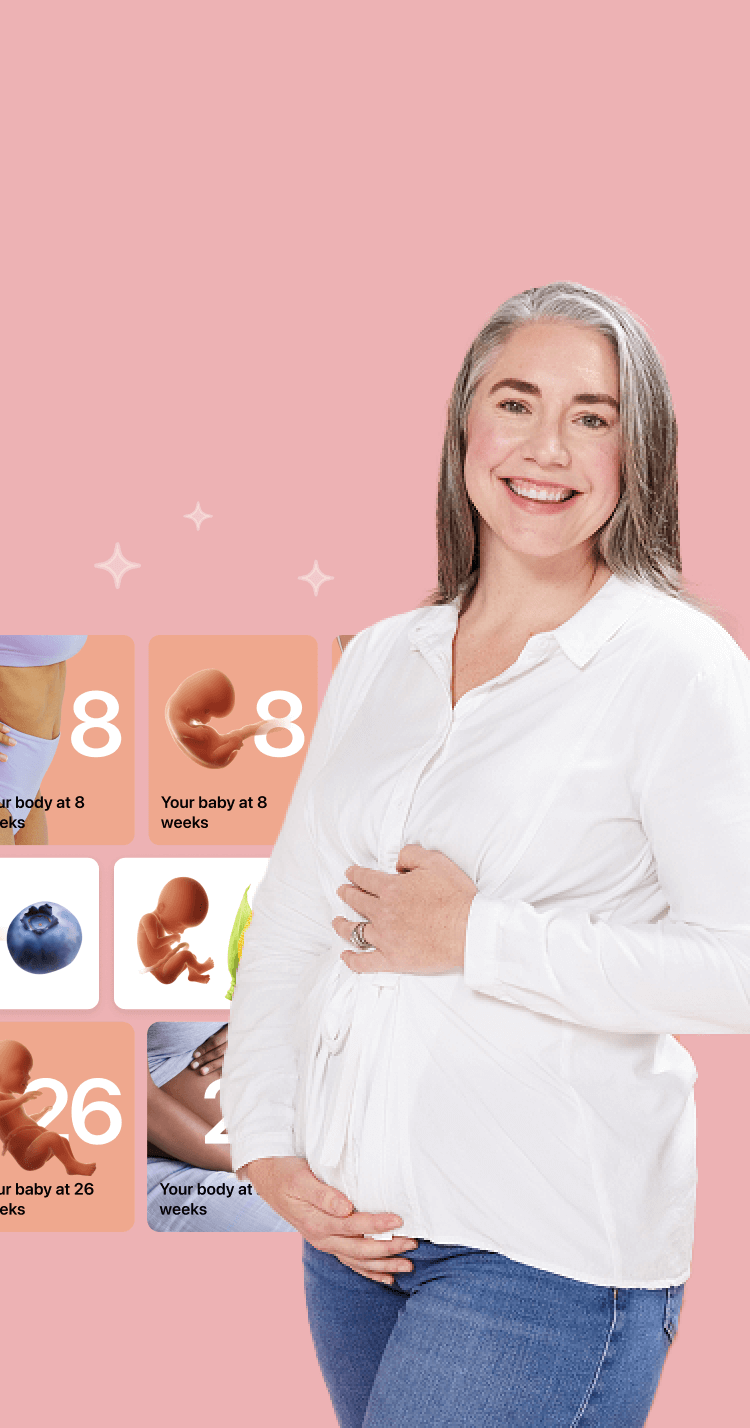
I vividly
remember the day
that we switched
Flo into
Pregnancy Mode — it was
such a special
moment.
Real stories, real results
Learn how the Flo app became an amazing cheerleader for us on our conception journey.
References
“Amniotic Fluid.” Cleveland Clinic, my.clevelandclinic.org/health/body/23310-amniotic-fluid. Accessed 31 May 2023.
“Bleeding during Pregnancy.” Mayo Clinic, Jan. 2022, www.mayoclinic.org/symptoms/bleeding-during-pregnancy/basics/when-to-see-doctor/sym-20050636.
“Bleeding Gums in Pregnancy.” NHS, www.nhs.uk/pregnancy/related-conditions/common-symptoms/bleeding-gums/. Accessed 31 May 2023.
“Fetal Development.” Perinatology.com, perinatology.com/Reference/Fetal%20development.htm. Accessed 31 May 2023.
“Fetal Development: What Happens during the 2nd Trimester?” Mayo Clinic, www.mayoclinic.org/healthy-lifestyle/pregnancy-week-by-week/in-depth/fetal-development/art-20046151. Accessed 31 May 2023.
Friel, Lara A. “Fevers during Pregnancy.” MSD Manual Consumer Version, Oct. 2021, www.msdmanuals.com/home/women-s-health-issues/pregnancy-complicated-by-disease/fevers-during-pregnancy.
“How Your Fetus Grows during Pregnancy.” The American College of Obstetricians and Gynecologists, Dec. 2021, www.acog.org/womens-health/faqs/how-your-fetus-grows-during-pregnancy.
“Morning Sickness: Nausea and Vomiting of Pregnancy.” The American College of Obstetricians and Gynecologists, May 2020, www.acog.org/womens-health/faqs/morning-sickness-nausea-and-vomiting-of-pregnancy.
“Nausea during Pregnancy: A Good Thing?” Mayo Clinic, www.mayoclinic.org/healthy-lifestyle/pregnancy-week-by-week/expert-answers/nausea-during-pregnancy/faq-20057917. Accessed 31 May 2023.
“Nutrition during Pregnancy.” The American College of Obstetricians and Gynecologists, Dec. 2021, www.acog.org/womens-health/faqs/nutrition-during-pregnancy.
Pacheco, Danielle. “Pregnancy Sleeping Positions.” Sleep Foundation, Nov. 2022, www.sleepfoundation.org/pregnancy/pregnancy-sleep-positions.
“Pregnancy and Oral Health.” Centers for Disease Control and Prevention, Mar. 2022, www.cdc.gov/oralhealth/publications/features/pregnancy-and-oral-health.html.
“Pregnancy Nutrition.” American Pregnancy Association, Apr. 2021, americanpregnancy.org/healthy-pregnancy/pregnancy-health-wellness/pregnancy-nutrition/.
“Quickening in Pregnancy: First Movements & What To Expect.” Cleveland Clinic, my.clevelandclinic.org/health/symptoms/22829-quickening-in-pregnancy. Accessed 31 May 2023.
Sedrakyan, Sargis, and Elena Dain. Kidney Development. doi.org/10.1016/B978-0-12-449851-8.00029-2. Accessed 31 May 2023.
“Urgent Maternal Warning Signs.” Centers for Disease Control and Prevention, 27 Feb. 2023, www.cdc.gov/hearher/maternal-warning-signs/index.html.
“Vaginal Discharge in Pregnancy.” NHS, www.nhs.uk/pregnancy/related-conditions/common-symptoms/vaginal-discharge/. Accessed 14 June 2023
“Week by Week Guide to Pregnancy.” NHS, www.nhs.uk/start4life/pregnancy/week-by-week/2nd-trimester/week-13/. Accessed 31 May 2023.
“20 Week Ultrasound (Anatomy Scan): What to Expect.” Cleveland Clinic, my.clevelandclinic.org/health/diagnostics/22644-20-week-ultrasound. Accessed 31 May 2023.
History of updates
Current version (18 August 2023)
Published (24 February 2019)
In this article
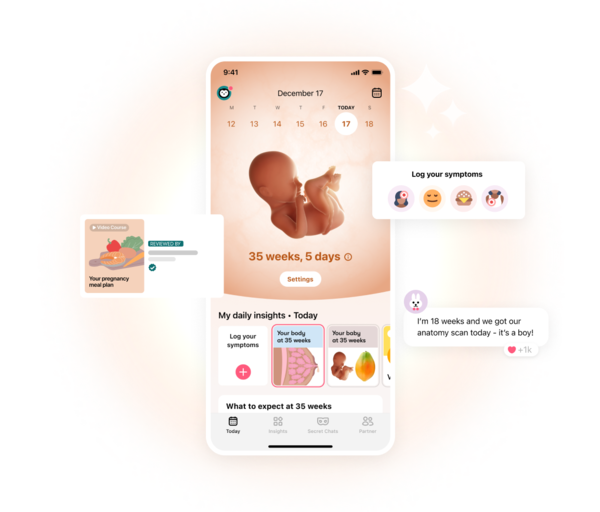
Get your personal guide to pregnancy with the Flo app
-
Follow your baby's growth week by week
-
Get expert info on symptoms, safe foods, and more
-
Chat with other parents-to-be




